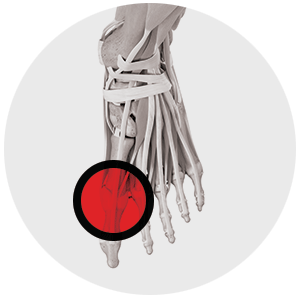Hallux Rigidus

Hallux Rigidus
Hallux rigidus refers to stiffness (rigidus) of the joint at the base of the great toe. This is the joint known as the metatarsophalangeal joint (MTPJ). The usual cause of hallux rigidus is arthritis or wear and tear of the cartilage that lines the joint. It may be caused by an injury or part of a generalised condition such as gout. Often there is no identifiable cause, it just develops particularly as patients get older. Clinically it presents as stiffness and pain in the great toe. If the symptoms are severe it can limit walking, compromise work and recreational activities. Bony spurs can develop around the joint and can cause pain by rubbing against shoes. In an attempt to offload this pain, patients will often try to walk on the outside part of their foot which may then cause some pain to the lesser toes, known as transfer metatarsalgia.
Operative Management
Surgery is considered when all the previous measures fail. There are 3 main surgical options:
- Debridement of the MTP joint;
- Arthrodesis or fusion of the MTP joint;
- Replacement of the MTP joint.
The decision upon which treatment suits which patient depends upon the severity of the arthritis, the age and functional demands of the patient, and also symptoms from the other joints. Dr Rao will clearly explain to you which surgical option is the best option for you, taking all these things into consideration. If the HR is mild, then part of the osteophytes can be trimmed and the joint washed out. This procedure is known as a cheilectomy.
MTP Arthrodesis Fusion is the gold standard procedure for moderate to severe arthritis. The remaining cartilage of the joint is removed and the 2 bones are fused together with the use of a plate. Dr Rao uses an Arthrex 1st MTP joint fusion plate. It is a 90%-95% successful operation. The joint is stiffened which does limit the wearing of high heels and it can make running difficult, however it is an excellent procedure for pain relief and allows patients to return to significantly high level function.
MTP replacements are nowhere near as good as knee and hip replacements. Dr Rao tends to use a Wright Medical silastic spacer in very selected cases. Dr Rao will talk to you about whether this is an appropriate implant for your great toe arthritis.
Risks and Complications
Complications can occur in 5%-10% of patients, including wound healing problems, infection, nerve damage, incomplete relief of symptoms and in some cases failure of the bones to fuse.
Recovery Times
In terms of hospital stay:
- 2-3 nights in hospital;
- Rest, elevation and heel weight bearing for 2 weeks;
- Time off work:
- for seated jobs, 4 weeks
- for standing jobs around 10 weeks
- Foot swelling for 12 weeks
- Time to get back into shoes:
- with fusion is 8 weeks
- with debridement 6 weeks
- wide shoes 12 weeks
- normal shoes about 16 weeks
Meet Dr Rao
Dr Rao is a Newcastle Orthopaedic surgeon who specialises in all aspects of foot and ankle surgery. He graduated from medicine at the University of Sydney and trained as an orthopaedic surgeon in Newcastle and also in Queensland.
He also undertook further training by way of fellowship with world famous Dr Terry Saxby in Brisbane in 2008. He has also conducted further training by attending numerous courses overseas, in Thailand, the USA and right across Australia.

